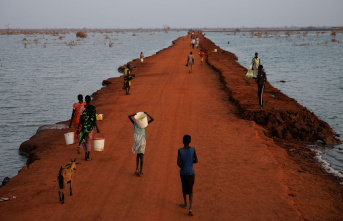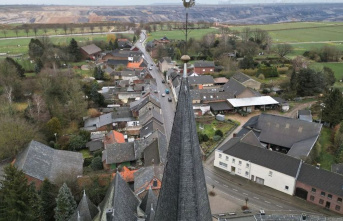Archaeologists from the Abu Dhabi Department of Culture and Tourism have unearthed the oldest known buildings in the United Arab Emirates on Ghagha Island, west of the capital. They are from 8,500 years ago, indicating that human settlement in the region is at least 500 years earlier than previously thought.
Until now it was believed that long-distance maritime trade routes, which developed during the Neolithic, were the catalyst for settlement in the area. But the latest discoveries show that Neolithic settlements existed before the start of trade, which means that it was the local economy and environmental conditions that gave rise to the first sedentary life forms in the region.
The islands, moreover, instead of being arid and inhospitable, offered a "Fertile Coast". It is no coincidence that the oldest known structures were found on Marawah, a low-lying island located about 15 kilometers north of the Khor al Bazm lagoon.
"Archaeological finds on Ghagha Island have shown that people settled and built houses here 8,500 years ago. The finds reinforce the deep cultural connections between the people of the United Arab Emirates and the sea. They also remind us that there is still much to discover throughout the region," says archaeologist Mohamed Al Mubarak.
The structures found are simple round rooms, whose walls are made of stone and of which almost a meter in height is preserved. The estancias were probably houses for a small community that may have lived on the island throughout the year. Hundreds of artifacts were found inside, including finely worked stone arrowheads that would have been used for hunting.
Experts believe that this Neolithic community also used the rich resources offered by the Persian Gulf. It is unknown, however, how long the settlement existed. Although, after it was abandoned, the site would have remained an important part of the cultural landscape: nearly 5,000 years ago, a person was buried in these ruins in one of the few known burials from this period in the Abu Dhabi islands. .
Ghagha is the westernmost island of the United Arab Emirates, with around 20 archaeological sites in its space. Researchers have discovered stone tools belonging to the bifacial Arab tradition, red-crested pottery, probably originating in Bahrain, dating to around 2000/1700 BC.
In addition to discoveries on the Ghagha and Marawah islands, Abu Dhabi's archaeological treasures also include ancient stone tools, dating back more than 300,000 years, found in excavations around Jebel Hafit, indicating that the United Arab Emirates they were an important pathway for the dispersal of humans throughout the world.
4












